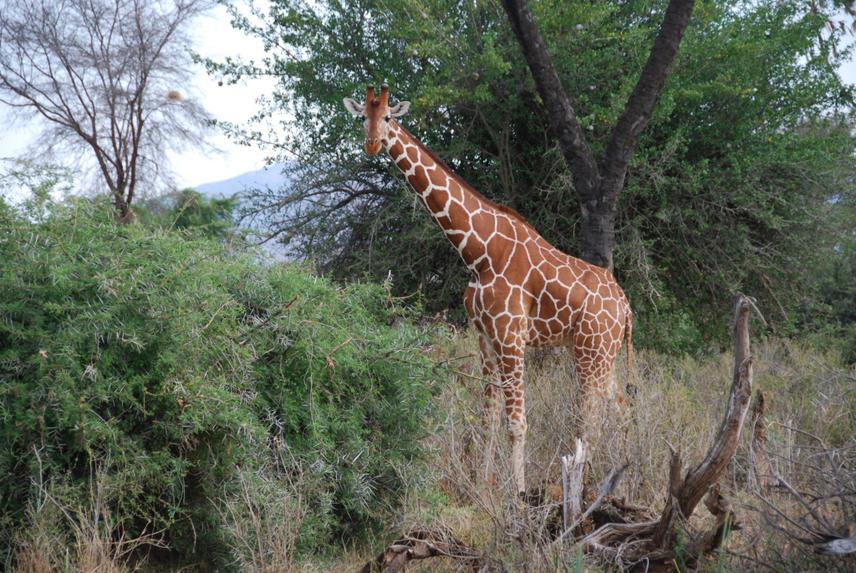Julian Fennessy
The project intends to establish baseline ecological and conservation “health” assessment of key giraffe populations (Nairobi, Nakuru and Samburu NPs) of three different subspecies (Masai, Rothschild and Reticulated) in Kenya.

Reticulated giraffe scenery.
Limited research has been undertaken on giraffe across Africa and the Kenyan Wildlife Service (KWS) and International Giraffe Working Group (IGWG) have both identified that the giraffe is of high conservation priority in Kenya yet no systematic monitoring or research has been established. The last major work undertaken in Nairobi NP was in the 1960s, and since then rapid population growth has put significant pressure on the surrounding Kitengela communal area, the migration route of giraffe and other species in and out of the park.
Today, many of the giraffe populations are biologically isolated from one another and as such ecologically, and potentially, genetically unique. The Rothschild’s giraffe is regarded as endangered and although small satellite populations have been established, little of their ecological needs are known. In contrast, the large numbers of Reticulated giraffe appeared to have crashed although little is known. As an important symbol of Kenya (and Africa), and as such are a key tourism and economic draw card, a greater understanding of the conservation status is required, especially since their numbers appear to have plummeted across Africa: assumed 30% drop in the past decade due to habitat loss and conflict with human growth and instability, to less than an estimated 100 000 individuals.
The project intends to establish baseline ecological and conservation “health” assessment of key giraffe populations (Nairobi, Nakuru and Samburu NPs) of three different subspecies (Masai, Rothschild and Reticulated) in Kenya. Working collaboratively with the Kenyan Wildlife Service (KWS) and key NGOs, the project hopes to build robust ecological assessment of the populations with a focus on the Nairobi NP population where giraffe migrate into the Kitengela communal areas and its peri-urban environment. The collaborative efforts seek to provide capacity building and ongoing information gathering to facilitate the long-term success of the project.